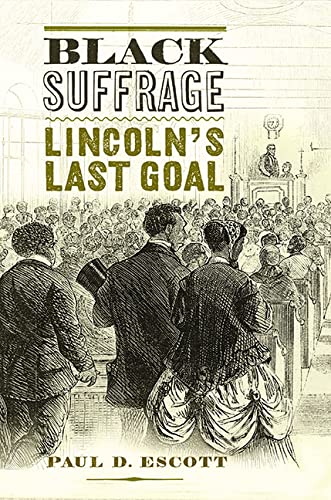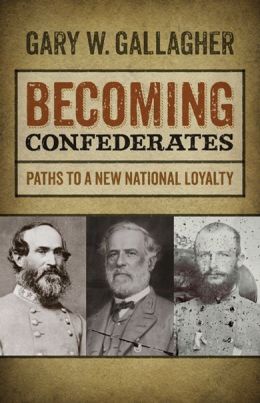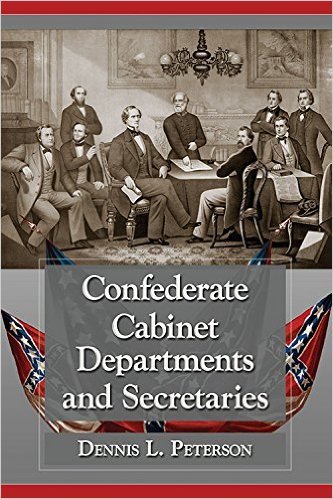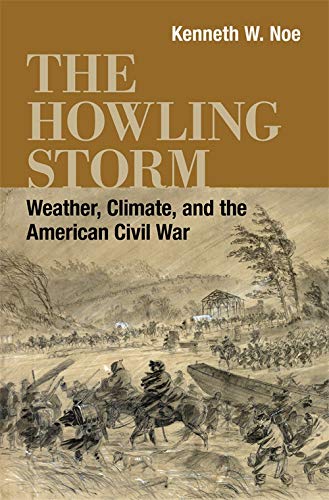The Cause of All Nations: An International History of the American Civil War by Don Doyle. Basic Books, 2014. Cloth, ISBN: 978-0465029679. $29.99.
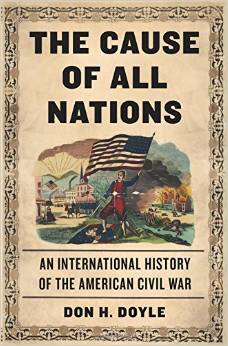 It has long been accepted that the Civil War cannot be fully understood without considering Confederate and Union diplomacy. Historians from D. P. Crook (The North, the South, and the Powers, 1861–1865 [New York, 1974]) to Howard Jones (Blue and Gray Diplomacy: A History of Union and Confederate Foreign Relations [Chapel Hill, 2010]) have shown that Union and Confederate efforts in London, Paris, and elsewhere cast important light on the reactions of the Great Powers to the conflict. Studies such as Jay Sexton’s Debtor Diplomacy: Finance and American Foreign Relations in the Civil War Era, 1837–1873 [Oxford, 2005] have demonstrated that in their endeavors to fund their war efforts, Union and Confederate emissaries courted the major European financiers and merchants, and that Civil War diplomacy was not confined to the political sphere.
It has long been accepted that the Civil War cannot be fully understood without considering Confederate and Union diplomacy. Historians from D. P. Crook (The North, the South, and the Powers, 1861–1865 [New York, 1974]) to Howard Jones (Blue and Gray Diplomacy: A History of Union and Confederate Foreign Relations [Chapel Hill, 2010]) have shown that Union and Confederate efforts in London, Paris, and elsewhere cast important light on the reactions of the Great Powers to the conflict. Studies such as Jay Sexton’s Debtor Diplomacy: Finance and American Foreign Relations in the Civil War Era, 1837–1873 [Oxford, 2005] have demonstrated that in their endeavors to fund their war efforts, Union and Confederate emissaries courted the major European financiers and merchants, and that Civil War diplomacy was not confined to the political sphere.
Don Doyle’s The Cause of All Nations opens up a new avenue for historians to explore Confederate and Union foreign relations by focusing on public diplomacy. The book’s primary aims are to explore each side’s efforts to mold public opinion abroad—and to draw attention to the dialogue between the Union and the Confederacy, on the one hand, and the worldwide public on the other. While one of the book’s fascinating arguments is that not once did this dialogue go over the heads of the political leadership on all sides, Doyle keeps high-level diplomacy in constant sight to show that public opinion abroad mattered: it had a direct influence on the major powers’ policies toward the United States, and thus on the course of the war. Furthermore, the book seeks to unearth the ways that Civil War belligerents framed messages about their respective causes. Building on the concept of “soft power,” Doyle wants to show that the success of both sides’ public diplomacy depended heavily on their ability to harness and use the basic values of their target audience—and to paint their own goals in similar colors.
The book makes a convincing case for the importance of public diplomacy in the Civil War. For example, Doyle argues compellingly that in the fall and winter of 1862–1863, public opinion in Europe proved a major factor influencing the decisions of France and Britain not to intervene in the conflict, and thus saved the war for the Union—at least for a while. “Lincoln’s Emancipation Proclamation had done nothing to discourage the Great Powers from privately wishing to bring the war to an end or for hoping for the success of the South,” Doyle writes. “But with public opinion apparently turning against intervention, none had the spine” to recognize the South (237). By way of contrast, the book shows that “Seward’s hard-power strategy” during the Trent Affair, which brought Britain and the Union to the brink of war in late 1861 and early 1862, was often risky, especially when “letting one’s enemies control the public narrative abroad” (81).
The Cause of All Nations is no less convincing on the importance of “soft power,” and it is filled with examples of how—by adopting a language and rhetoric that responded to the values of their target audience—representatives of the Union and the Confederacy alike won over hearts and minds abroad. What is more, the exploration of both sides’ sources and uses of “soft power” allows for one of the book’s most impressive achievements: the careful analysis of the development throughout the war of the Union’s and Confederacy’s messages to foreign publics. On slavery, for example, an underlying argument is that as long as the Union avoided putting abolition at the center of its stated war aims, it faced major obstacles in garnering support from foreign audiences. The book follows the gradual evolution that resulted in making abolition a declared Union goal, and shows that framing the North’s cause in terms of abolition ultimately enabled it to win the war for foreign hearts. The Confederacy, by contrast, remained reluctant to the very end to alter its message on the subject. In many ways, the book conveys that the diplomatic war was the South’s to lose—which it finally did because it failed to answer the Union’s “emancipation policy” with its “own promise of emancipation” (257).
The book presents an admirably balanced account of both Union and Confederate public diplomacy and “soft power.” Considering that the bulk of the literature on Civil War diplomacy concentrates on Southern endeavors abroad, this in itself is an important contribution. Furthermore, by giving the Union its fair share of the story, The Cause of All Nations casts new light on questions that have long preoccupied historians. For instance, the backstage debate between Seward and the federal government’s emissaries around the world about making abolition an official Union cause (which exposes the undetermined status of the issue in Union policy and diplomacy) greatly helps to explain Britain’s reaction to Lincoln’s Emancipation Proclamation. If, as Lawrence Goldman has persuasively argued, Britons largely misunderstood the president’s emancipation policy, Doyle’s study makes clear that much of the blame for this fateful misunderstanding rested with the Union, which failed to communicate a clear and unambiguous message on the subject. For too long, as Doyle shows, the Union even went to great efforts to state that abolition was not its goal. More generally, the book’s balanced account reveals how much each side’s diplomacy was affected by that of the other.
Moreover, the examination of both sides’ efforts to mold foreign public opinion yields the insight that the Civil War and its meaning were shaped—to a surprising extent—outside of the United States. Throughout, the book demonstrates that the Union and Confederacy, in attempting to sway public opinion abroad, often found themselves debating and recasting their own ideas about the war according to popular trends in France, Britain, Spain, Italy, and elsewhere. Thus, much of the pressure to make the war a conflict over slavery and abolition came from abroad. If, as Joseph Nye has argued, the key to successful public diplomacy lies in the ability to set the agenda so that it maximizes a nation’s “soft power,” here it seems that it was often the public in other countries—and not the American leadership at home or in the Union or Confederate foreign services—who decided what the Civil War should be about. If, as Doyle makes unequivocally clear, this was a war for a “cause of all nations,” it seems that all nations used hard as well as soft power to determine its outcome. While this point remains rather implicit, it may well be a major issue for future historians to explore.
Dr. Nimrod Tal teaches American History at the Kibbutzim College of Education, Technology and the Arts in Israel. He earned a D.Phil. at Oxford with a thesis titled, “The American Civil War in Twentieth Century Britain: Popular, Political, Military and Intellectual Legacies.”
